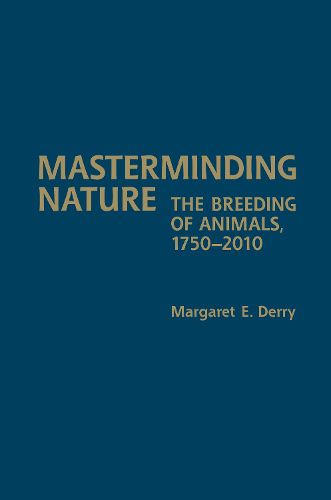Readings Newsletter
Become a Readings Member to make your shopping experience even easier.
Sign in or sign up for free!
You’re not far away from qualifying for FREE standard shipping within Australia
You’ve qualified for FREE standard shipping within Australia
The cart is loading…






In Masterminding Nature, Margaret Derry examines the evolution of modern animal breeding from the invention of improved breeding methodologies in eighteenth-century England to the application of molecular genetics in the 1980s and 1990s. A clear and concise introduction to the science and practice of artificial selection, Derry’s book puts the history of breeding in its scientific, commercial, and social context.
Masterminding Nature explains why animal breeders continued to use eighteenth-century techniques well into the twentieth century, why the chicken industry was the first to use genetics in its breeding programs, and why it was the dairy cattle industry that embraced quantitative genetics and artificial insemination in the 1970s, as well as answering many other questions. Following the story right up to the present, the book concludes with an insightful analysis of today’s complex relationships between biology, industry, and ethics.
$9.00 standard shipping within Australia
FREE standard shipping within Australia for orders over $100.00
Express & International shipping calculated at checkout
In Masterminding Nature, Margaret Derry examines the evolution of modern animal breeding from the invention of improved breeding methodologies in eighteenth-century England to the application of molecular genetics in the 1980s and 1990s. A clear and concise introduction to the science and practice of artificial selection, Derry’s book puts the history of breeding in its scientific, commercial, and social context.
Masterminding Nature explains why animal breeders continued to use eighteenth-century techniques well into the twentieth century, why the chicken industry was the first to use genetics in its breeding programs, and why it was the dairy cattle industry that embraced quantitative genetics and artificial insemination in the 1970s, as well as answering many other questions. Following the story right up to the present, the book concludes with an insightful analysis of today’s complex relationships between biology, industry, and ethics.